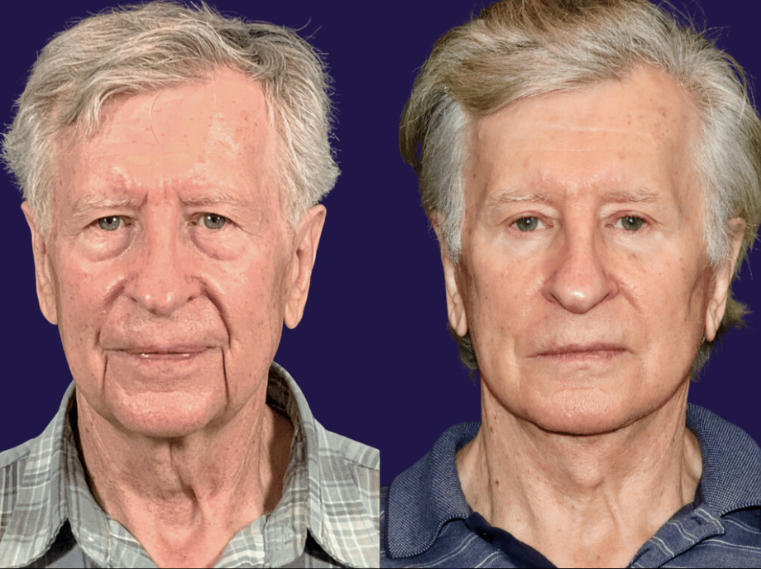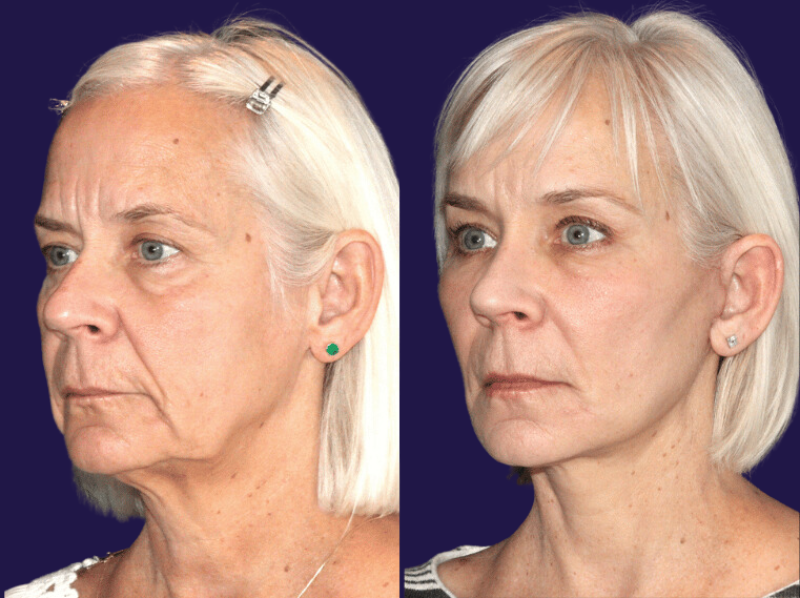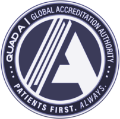Quick Links

- What Happens During A Facelift
- Is A Facelift Right For Me?
- AndrÉs SÁrraga Md Facs
- Preparing For Your Facelift Procedure
- Recovering From Facelift Surgery
- Your Procedure
- Restoring Youth Through Volumizing Facelift Procedures
- The Benefits Of The Harmonic Scalpel
- After Your Procedure
- Risks Of Facelift Surgery
- Facelift Procedures In Latham, Ny
A facelift is the “gold standard” to effectively and dramatically restore your youthful appearance. It is one of the most frequent surgeries Dr. Lucie Capek performs in her practice. With aging, our face naturally loses volume, and the effects of sun exposure, genetics, and the stresses of daily life lead to wrinkles, jowls, and sagging skin.
A facelift, often performed in combination with a neck lift, will reposition sagging and deflated tissues, get rid of the “waddle” and restore a youthful jawline.
What Happens During a Facelift
You may read about various “branded” facelift techniques that promise minimal downtime or have catchy names. Dr. Capek prefers to choose the type of facelift techniques used during your procedure based on your specific needs and her recommendations are highly customized to each patient. Her goal is to “set back the clock” by providing a result that is a younger version of yourself, without looking overdone or making you look like a different person. She uses modern, short scar techniques and the latest instruments, such as the Harmonic Scalpel, to achieve natural-looking results with a shorter recovery.
Is a Facelift Right for Me?
You may be an excellent candidate for a facelift if you have some of the following concerns:
- Sagging skin and loss of tone in the lower face, resulting in jowls at the jawline
- Deep creases around the corners of your mouth and chin area
- A deflated, hollow appearance in your midface, with flattened or gaunt cheeks
- Cheek skin falls forward around your mouth when you look down
- A double chin, resulting from loose skin and excess fatty deposits under the chin and jaw
- Creased and sagging skin on your neck
As with all cosmetic surgery procedures, good health and reasonable expectations of the outcome are also important. People with excess facial skin are typically the best candidates for this procedure, assuming they are healthy enough to undergo a surgical procedure that requires general anesthesia.



board-certified plastic surgeon
DR. LUCIE CAPEK
Dr. Lucie Capek offers advanced cosmetic plastic surgery from the unique perspective of a female plastic surgeon. Since 1996, she has been serving patients in the Capital District from Albany, Saratoga, Schenectady, and Troy, NY. She is known for using the latest technology to perform body contouring, breast surgery, and facial cosmetic surgery. She personalizes every treatment to give each patient the most natural-looking results, enhancing their beauty and increasing their self-confidence. Above all, her practice is dedicated to your health and wellness. Dr. Capek understands that your beauty and confidence is about more than just your appearance. To schedule your first consultation, contact Lucie Capek, MD.
LEARN MOREPreparing For Your Facelift Procedure
During your consultation, Dr. Capek will discuss your goals and expectations from surgery to determine the best treatment course to achieve your desired results. It is very helpful for you to bring in a close-up photo of your face from your late teens or twenties (a high school or college graduation photo or a wedding photo works well). This serves as an excellent reference for Dr. Capek to see how you have aged and how your face developed as you left adolescence.
Every facelift surgery is customized to each patient’s unique needs and Dr. Capek may recommend additional treatments to rejuvenate your neck, eyelids, and complexion to achieve a balanced look. She will also advise you on how to prepare for your procedure and what to expect during your recovery. You will have ample opportunity during your consultations to have your questions answered so that you feel confident in your decision to have a facelift procedure. Being prepared is your first step in ensuring a positive outcome.
Recovering From Facelift Surgery
You should be in optimum health when considering elective surgery in part because it makes recovery simpler and quicker. For the best recovery experience, it’s important to follow a healthy lifestyle, including a nutritious diet and regular exercise, as well as following your primary care physician’s advice when treating chronic conditions like high blood pressure. It’s also important for both safety reasons and recovery expectations that you share your detailed medical history with Dr. Capek.
It is also imperative that you don’t smoke or be exposed to any nicotine-containing products for at least 6 weeks prior to and 6 weeks after your facelift surgery. Smoking and other forms of nicotine decrease your body’s ability to heal normally and can lead to major complications like skin death, severe scarring, breathing problems, and blood clots. Avoid taking aspirin, non-steroidal anti-inflammatory medications (NSAIDs: Advil, Motrin, Aleve), and vitamins/homeopathic regimens. These can increase bleeding.
Your Procedure
Dr. Capek usually performs facelift surgery at our QuadA-accredited office-based operating suite, Capek Surgical Arts, or a hospital outpatient surgery center, under IV sedation administered by a board-certified anesthesiologist. She most often performs a short scar vertical facelift with lifting of deep tissues using the state-of-the-art HARMONIC® scalpel to reduce bruising, swelling, and recovery time.
Depending on your surgical plan, Dr. Capek can replace lost volume in the mid-facial tissues and fill wrinkles and hollows under the eyes with micro-fat grafting. In some cases, a chin implant can be added for better jawline definition in addition to the removal of excess skin around the jawline. An open necklift with or without platysmaplasty is often included with facelift surgery.
Please beware of false claims regarding the superiority of certain heavily marketed facelift techniques. There is no compelling scientific evidence that proves better and longer lasting results with one kind of deep technique over another ie. deep-plane vs. SMAS. The skill of your surgeon and their results are most important in selecting a provider.

Facelift Incision Sites
Dr. Capek creates small incisions for facelift surgeries that follow the natural curves at the front of your ears, under the sideburn area, and in the crease behind your ears. The resulting scars are usually barely detectable, don’t create a tell-tale line in front of the ear, and do not raise your hairline at the temple.
A small neck lift incision is also made under the chin if there is a significant amount of fat in the neck could benefit from defatting or muscle work (platysmaplasty). Through these incisions, Dr. Capek accesses the necessary areas of skin to be lifted and also exposes the SMAS layer on top of the facial muscles. She can then also remove excess fatty tissue under the chin and jowls if needed, and lifts the underlying SMAS and muscles vertically, leading to a long-lasting and natural-looking lift with a youthful mid-face and well-defined jawline.
Procedures in 3d
Restoring Youth Through Volumizing Facelift Procedures
Since the process of aging results in loss of volume in the face at all tissue levels (thinner skin, loss of fat, muscle, and bone atrophy), replacing volume is an essential part of rejuvenating the face in most patients. Tighter does not always look younger, as many of us have seen with celebrities whose faces appear mask-like and unnatural. This is where micro fat grafting adds a very natural and long-lasting dimension to facial rejuvenation surgery.
LaserLift with Precision Tx™
Precision Tx™ LaserLift is a knifeless, minimally invasive procedure for contouring and tightening the jawline and neck. Dr. Capek was the first surgeon in the Capital District region to offer Precision Tx™ and has been performing the tried-and-true LaserLift technique for over 10 years.
Patients throughout the Capital District areas of Albany, Schenectady, Troy, and Saratoga trust New York plastic surgeon Dr. Lucie Capek to perform their LaserLift. Many of our patients also travel from New York City, Vermont, Massachusetts, and beyond to receive her skilled and compassionate care.
The Benefits of the HARMONIC Scalpel
The HARMONIC® scalpel is an ultrasound-powered instrument that has been shown to seal blood vessels on contact and also causes less heat injury to tissues than electrocautery, which is often used in facelift surgery. Studies have shown that the use of this instrument decreases recovery time following facelift surgery and Dr. Capek has found it also decreases the length of the procedure. She has been using it in facelift surgery for nearly 10 years with excellent results and many satisfied patients.
The detailed steps of your facelift surgery will vary depending on your unique needs and goals. Some patients need only a “mini” facelift while others may add other procedures, like eye lifts, to get the best possible results.
After Your Procedure
After facelift surgery, Dr. Capek will apply a bandage to give you light compression for about 24 hours. This helps to reduce swelling and bruising both at the time and in the future. If you are having your surgery at the hospital, she may suggest that you stay for an overnight observation where you can enjoy one-on-one nursing, and lots of TLC. Your bandage is changed the next morning and you can use a light neck support garment as needed for the next few days. Most patients report that they have very little discomfort after facelift surgery.

Dr. Capek allows patients to shower and shampoo their hair 48 hours after surgery. Many people worry about how their faces will feel following this type of plastic surgery. Your skin will feel numb, tingly, or itchy around your ears, neck, and outer cheeks. This gradually gets better over several months. You may feel stiff and have somewhat limited movement until this gets better in the first few days. Nerve weakness is rare but if it occurs, it is usually minor and recovers over several weeks.You can also expect some bruising and swelling in the face or neck, which may take up to 2-3 weeks to resolve. This will vary depending on the exact nature of your procedure.
You will have some stitches that need to be removed about one week after surgery and you can put make-up on any bruises by then as well. Most patients are back to their normal routine one to two weeks after surgery. You should avoid strenuous activity for 2 weeks and intense exercise or head-down activities, like yoga, for about 6 weeks.
You are an important partner in your recovery and you should always follow Dr. Capek’s detailed instructions on how to care for yourself after surgery. Follow-up appointments will be scheduled to oversee your recovery process and make sure your healing is progressing normally.
Risks of Facelift Surgery
Dr. Capek will do everything possible to make sure your facelift experience is safe, comfortable, and effective. However, even when performed by a board-certified and experienced surgeon, all procedures carry some associated risk of complications. Facelift surgery risks include bleeding, infection, excessive bruising or swelling, permanent numbness, damage to deeper tissue structures, poor scars, poor fat graft survival, and reactions to medication or anesthesia. In Dr. Capek’s experience, these complications are rare and usually treatable. Facelift surgery is generally a low-risk procedure with long-lasting and pleasing results.

QuadA Accredited
CAPEK SURGICAL ARTS
Dr. Capek is pleased to offer her patients an intimate, comfortable and discreet surgical experience at Capek Surgical Arts (CSA), her state-of-the-art Quad A accredited operating suite right here in Latham, NY. You can undergo your procedure under the expert care of board-certified Plastic Surgeon Dr. Capek and her exceptional team of anesthesia and clinical staff without having to go to a hospital or surgery center.. Cae you can expect with Dr. Capek and her team.
LEARN MOREFacelift Procedures in Latham, NY
Contact us today to learn more about facelifts and schedule your initial consultation with Dr. Capek. Our office is just 13 miles from Albany and 9 miles from Schenectady, New York. For more information, visit our blog or patient reviews page.
SCHEDULE A CONSULTATION
For more information, schedule your consultation appointment with Dr. Capek today!







